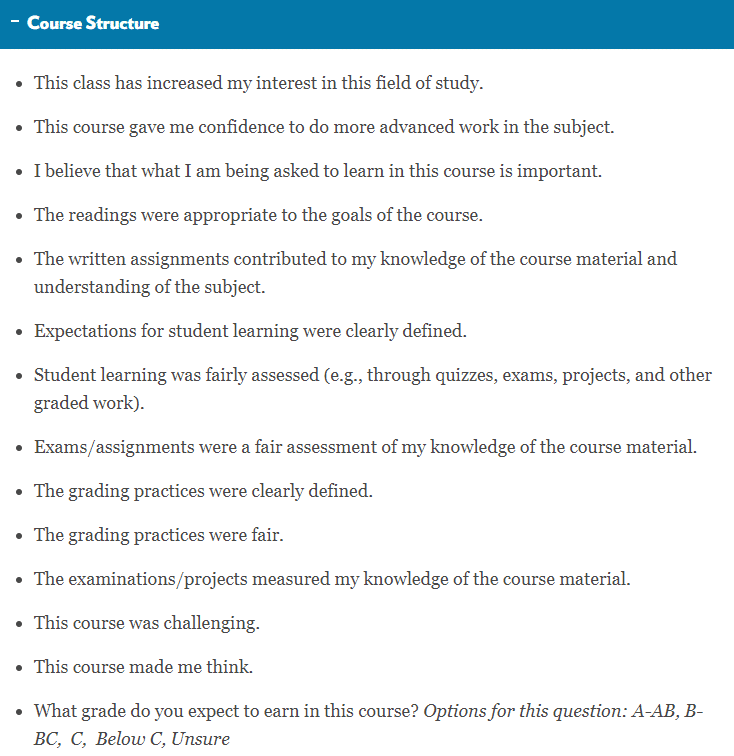Best Course Feedback: Why It’s Essential and How to Gather It Effectively
Course feedback is an essential tool for both educators and learners. Whether you’re teaching a college class, leading a professional development seminar, or offering an online course, collecting honest and actionable feedback can make a significant difference. In this article, we will explore why course feedback is important, how to collect it effectively, and how to use it to improve your educational offerings.

Why Course Feedback Matters
Course feedback is crucial for several reasons. First, it provides insights into how students perceive the course content, teaching methods, and overall learning experience. By gathering feedback, you can identify areas of strength and weakness in your course.
-
Improves course quality: Feedback helps you fine-tune your content to meet learners’ needs.
-
Enhances student satisfaction: When students feel their voices are heard, they are more likely to engage in the course.
-
Promotes continuous improvement: Feedback fosters an environment of ongoing development, where you can adjust the curriculum or teaching techniques accordingly.
Ultimately, course feedback helps create a better learning experience, ensuring that future students benefit from your course as much as possible.
How to Collect Effective Course Feedback
Gathering meaningful course feedback isn’t just about asking for opinions; it’s about asking the right questions in a structured way. Here are several methods and tips for collecting valuable feedback:
1. Surveys and Questionnaires
The most common and effective way to collect feedback is through surveys or questionnaires. These tools allow you to ask both quantitative (e.g., scale of 1-10) and qualitative (open-ended) questions.
-
Standardized questions: Use a mix of Likert scale questions (e.g., “How satisfied were you with the course content?”) and open-ended ones (e.g., “What would you improve about the course?”).
-
Anonymous feedback: Ensure anonymity to encourage honest responses without fear of judgment.
A great tool for creating surveys is QuestionPro, which allows you to design customizable surveys that are easy to distribute and analyze.
2. Online Feedback Forms
Online feedback forms are an excellent way to gather instant responses. By integrating Google Forms or similar platforms, you can quickly send forms to students at the end of the course, and students can fill them out conveniently.
-
Ease of use: These forms are simple for both instructors and students.
-
Instant data collection: The feedback is gathered in real-time, which allows for faster analysis and adjustments.
3. In-Class or Live Feedback
For instructors offering in-person or live online courses, real-time feedback can be incredibly helpful. This could be done through informal discussions, polls, or even by asking students to fill out feedback forms at the end of a class.
-
Quick adjustments: You can make immediate changes if necessary based on live feedback.
-
Personal touch: Engaging with students personally about their learning experience can enhance your relationship with them.
Key Questions to Ask in Course Feedback
When collecting feedback, it’s essential to ask the right questions to get the most out of the responses. Below are some key categories and sample questions you can include in your course feedback surveys:
1. Course Content
The course material is the backbone of any learning experience, so it’s vital to understand how well it is received by students.
-
Was the course content clear and well-organized?
-
Did the course meet your learning objectives?
-
Were the resources (text, videos, readings) helpful in understanding the material?
2. Teaching Methods
Effective teaching methods can significantly enhance a student’s learning experience. Understanding which methods worked well and which didn’t can help you adjust your approach.
-
Was the teaching style engaging and effective?
-
Did the instructor explain the concepts clearly?
-
Was there a good balance between lectures, assignments, and group activities?
3. Student Support
Course feedback should also explore the level of support students received throughout the course. This includes academic support, technical help, and accessibility.
-
Did you feel supported by the instructor or teaching assistant?
-
Was technical support readily available if needed?
-
Were learning materials accessible for all students?
4. Course Logistics
Logistics play a significant role in how smoothly a course runs. Consider asking about the course structure and its overall management.
-
Was the course schedule convenient?
-
Were the deadlines reasonable?
-
How would you rate the online platform used for the course?
Analyzing and Using Feedback to Improve Your Course
Collecting feedback is only the first step—analyzing and acting on that feedback is where the real improvements happen. Here’s how to effectively use feedback to enhance your course:
1. Look for Trends in Responses
Once you’ve collected the feedback, start looking for patterns or recurring themes in the responses. Pay attention to both positive comments (what students liked) and constructive criticism (areas for improvement).
-
For example, if multiple students mention that the course content was unclear, consider revising your materials.
-
If several students find the assignments too challenging or time-consuming, try adjusting the workload.
2. Prioritize Actionable Items
While it’s essential to consider all feedback, focus on making changes that will have the most significant impact on student experience. Prioritize actionable items that will make a difference for future learners.
3. Make Adjustments Between Sessions
Don’t wait until the end of the course to make changes. If you receive feedback during the course, make adjustments as soon as possible to improve the remaining lessons.
For example, if students are struggling with a particular topic, you could offer additional resources or hold a review session to clarify misunderstandings.
4. Communicate Changes to Students
After analyzing feedback and making adjustments, it’s essential to inform your students about the changes. This not only shows that you value their input but also helps them feel more engaged in the learning process.
-
Send out an email or announcement explaining the changes you’ve made based on their feedback.
-
Let students know how their feedback has contributed to the improvement of the course.
FAQs About Course Feedback
Q1: How often should I collect course feedback?
It’s a good idea to collect feedback at different stages throughout the course. A quick survey after each module or unit allows you to make adjustments early. You should also collect final feedback at the end of the course for a more comprehensive view.
Q2: How can I encourage students to provide honest feedback?
To encourage honesty, ensure that the feedback process is anonymous. Assure students that their responses will be kept confidential and that their opinions are valued, which helps foster an open environment.
Q3: How do I handle negative feedback?
Negative feedback should be viewed as an opportunity for growth. Responding to criticism in a positive and constructive manner will help you improve as an educator. Address the feedback with specific actions to show that you take it seriously.
Q4: Can I use feedback to adjust the difficulty level of my course?
Absolutely! If you receive feedback that the course is too challenging or too easy, consider adjusting the level of difficulty. Balancing the workload and complexity based on student feedback helps create a more effective learning experience.
Conclusion
Gathering course feedback is a crucial part of improving the learning experience for both instructors and students. By using the right tools and asking the right questions, you can collect valuable insights that will help you refine your course, teaching methods, and student support. Remember to act on the feedback promptly and communicate changes to your students, showing them that their opinions matter.
For more tips and insights on course management and feedback collection, visit DUYTHIN.DIGITAL.

